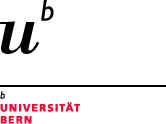Interfakultäre Koordinationsstelle für Allgemeine Ökologie (IKAÖ) |

Forschung
Using system dynamics modeling to inform strategy development at the national level: Societal trends and dynamic interactions between transport behavior and spatial development”
A research project for the Swiss Federal Roads Authority
Ruth Kaufmann-Hayoz*
Ueli Haefeli#
Silvia Ulli-Beer*
Heidi Hofmann*
Daniel Matti#
* Interdisciplinary Center for General Ecology, University of Berne, Berne,
Switzerland
# Interface, Institute for Policy-Research, Lucerne, Switzerland
This research projects builds on a system dynamics modeling approach for exploring the influence of social trends on dynamics interactions between transport behavior and spatial development in Switzerland. It aims at informing strategy development at the national level and at enhancing goal alignment between different policy sectors. While considerable knowledge about normative objectives of sustainable transport has been elaborated, there is a lack of knowledge about dynamic interactions between transport needs, societal trends, and spatial development. Hence, the study aims at enhancing system understanding and closing the identified knowledge gap as well as at enabling multi-loop institutional learning in strategy design. Within the strategic management process, the modelling approach helps to develop a common vocabulary and an effective basis for communicating complex and sometimes paradoxical conditions and strategy options (Georgantzas and Acar 1995; Georgantzas 2003) (Senge and Sterman 1992; Sterman 2000) (Morecroft 1988).
The following questions will be addressed.
1. What are the relevant and crucial social variables (describing social trends)
that strongly influence transport behavior and spatial development?
2. What social trends can be identified? What is their likely development?
3. What dynamical interactions exist between variables describing transport
behavior and spatial development as well as social trends?
4. What are possible behavior modes of indicators of transport and spatial
development variables under different social trend scenarios?
5. What kind of processes can be identified that are working towards or against
the formulated normative objectives?
Method
The research approach draws on integrative system methods (Schwaninger 1997) and methods common in technology assessment (Grupp 1992), (Ruesch and Haefeli 2000), which are well suited for scenario-driven planning (Georgantzas and Acar 1995). Although a full GMB (Vennix 1996), (Andersen and Richardson 1997) approach cannot be realized, a narrow collaboration with the end users will be pursued, especially in the problem identification and model conceptualization phase. This will ensure that the relevant perspectives and the critical factors will be captured, and it will also help to clarify the purpose of the modeling approach. Two meetings in the this first phase of the project are planned, and a workshop will be dedicated to explore the suggested system dynamics model. However, the model formulation will be based on a literature review identifying relevant concepts, variables and available empirical data. Finally, with the help of the model, “what-if” questions addressing different social development scenarios can be explored (Zagonel, Rohrbaugh et al. 2004 forthcoming). Although the model will include hard data and expert judgments, it will ensure a consistent inference based on the same (in the best case) agreed on mathematical précis logic explaining the stated causal interrelationship of the variables included. The study should be completed within ten months, beginning in Spring 2004.
First Results
An ongoing study (Haefeli 2003; Haefeli in preparation) gives evidence that the modal split in German and Swiss cities cannot only be explained by structural and spatial variables, but that there exist complex interactions between institutional and transport policy factors. Also, suburbanization in the United States was determined by a number of variables other than the implementation of new transport technologies (Jackson 1985). The literature gives ample evidence that transport needs are strongly driven by the interplay of different groups of variables such as household size, development of income, time for leisure and vacations, education, preferences and values, or variables of transport culture. Furthermore, the size of different lifestyle groups will define future transport needs (Götz 1997). This short overview only highlights some first deliberations that precede the development of a conceptual and a first cut simulation model. Key social trends relevant for transport and spatial development will be discussed. Furthermore, a dynamic theory of the interactions between general societal variables, transport behavior variables, and variables of spatial development will suggested.
Discussion
This study contributes to the discussion of managing for sustainability. It considers both levels of management: the strategic and the normative level. The strategic task can be seen in detecting transportation needs in an early phase, in order to ensure flexibility and responsiveness. Contrasting possible developments with the normative postulate of sustainability helps to identify desired and undesired development trends. Subsequently, strategies can be designed and solutions implemented that aim to satisfy transportation needs while reinforcing desired development trends. The SD-model can help policy makers to improve their skills of balancing complex decisions on long- and short-term imperatives as well as on economic, social and ecological goals (Schwaninger 2003). However, one has also to be aware of the limitations of this modeling approach. Firstly, the scenarios and simulated development trends will only reflect the assumptions made in the model and the endogenous feedback loops formulated. There may be other variables and developments that would be as influential as the ones captured in the model boundary. Therefore, the modeling approach can only enhance the understanding of the system and its behavior that was under focus and modeled endogenously. Secondly, long-term planning also asks for decision-support tools that enable a dynamical adjustment to new insights and goal settings while being adaptive to not foreseeable incidents and innovations.
